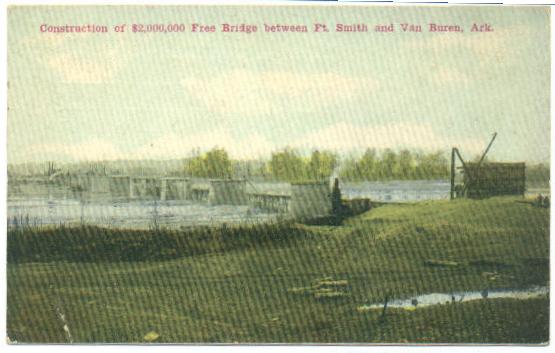 |
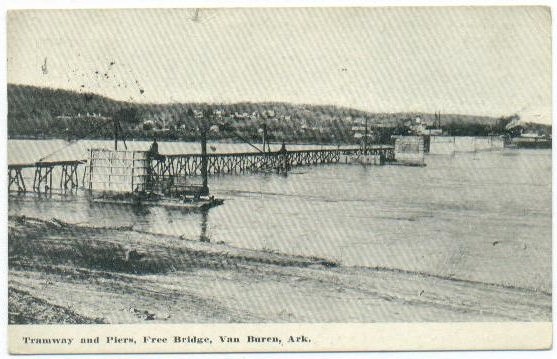 |
Contributed by H. E. Huber |
Construction scenes of the Ft. Smith-Van Buren Free Bridge in 1909.. |
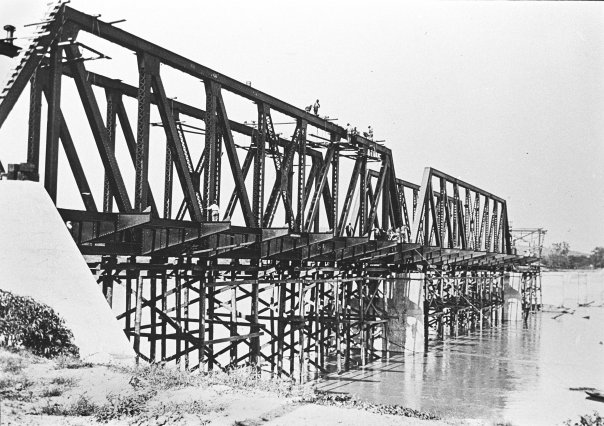 |
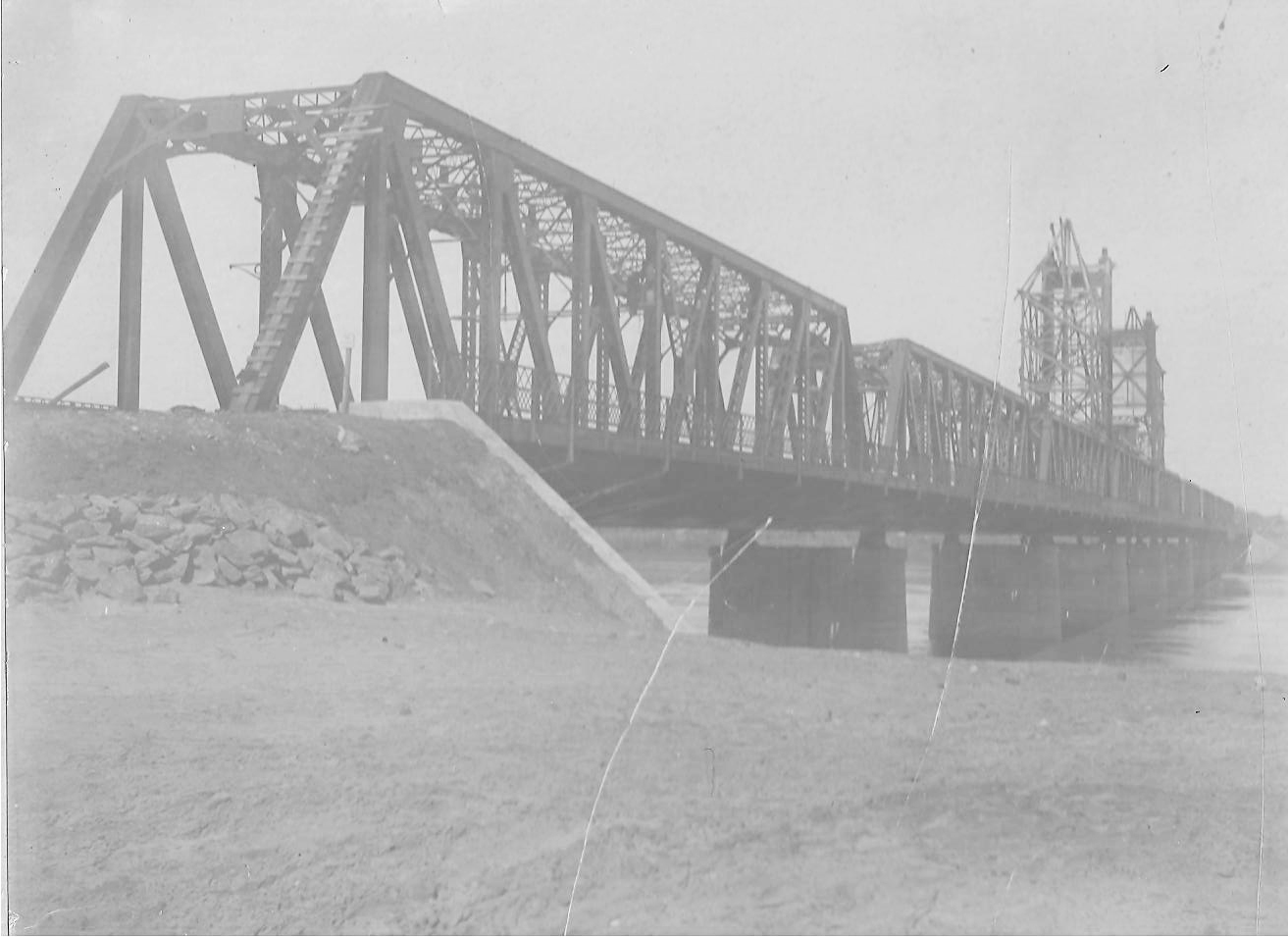 |
| Construction |
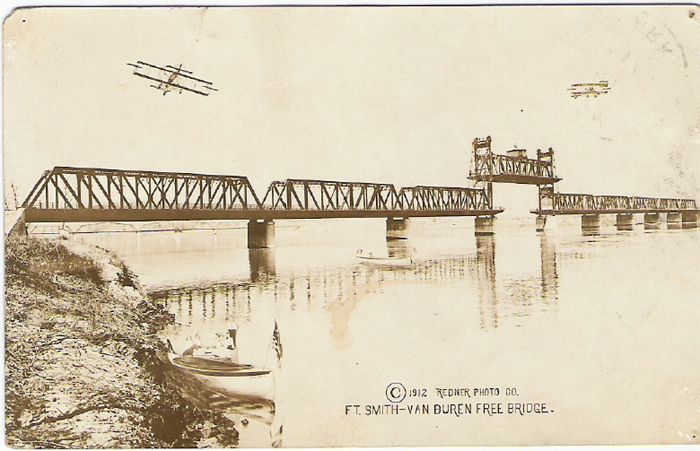 |
Contributed by H. E. Huber |
In Streetcars of Fort Smith, Charles Winters said that two airplanes
were at the Fort Smith-Van Buren Bridge dedication celebration to fly the
first airmail over Fort Smith. It was the second "official" airmail flown
in the U.S. The airmail happened on 1 April 1912. |
| Use of the Frisco's R.R. bridge for wagon traffic became unnecessary on April 1, 1912 with the completion of the "Free Bridge". This bridge was constructed over a 15 month period by the Kansas City Bridge Company. The cost of the bridge was about $650,000.00. The bridge was 1760' long. The trusses consumed about 4,100 tons of steel. This rather odd looking bridge consisted of nine identical spans. Any of the seven interior spans could be used as a lift span by moving the towers and hoisting machinery or erecting new ones. This provision is a good indication of just how untamed the Arkansas River was at this time. The free bridge was built with dual trolley tracks inside the spans and passenger and vehicle lanes outside the spans on "wings" It also could have functioned as a railroad bridge as it carried a single set of rails down the centerline, but it apparently was never used for that purpose. Additional photos and a cross-section drawing of the "free bridge" can be found in The Streetcars of Fort Smith, Arkansas by the late Charles Winters, which is available from the Trolley Museum there. |
Contributed by John Dill |
 |
Contributed by H. E. Huber |
The bridge had two sets of tracks for street cars that were spaced such that a steam train could use the two inner most rails. |
 |
The tracks originally ran inside the trusses while the wagons and/or cars used platforms on the outside of the trusses. In later years cars ran inside the trusses with the platform outside abandoned. Still later cars from Main Street could access the platforms while the main route was down the inside. The viaduct across the bottom land after the 1943 flood was only two lanes. The roadway narrowed on the curve of the Ft. Smith side of the bridge. |
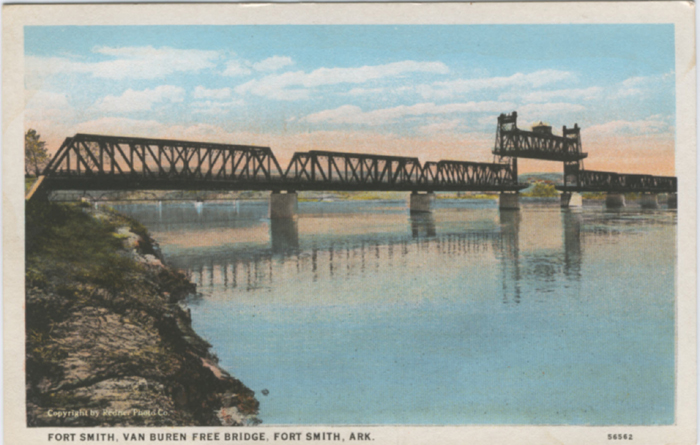 |
Contributed by John Dill |
| The original Frisco bridge can be seen behind the "free bridge" in the postcard. Only a year or so after the "free bridge" was finished the superstructure of the Frsico bridge was removed and replaced with a much heavier, metal structure designed for "modern" locomotives that is still in use today. |
Contributed by John Dill |
Flood of Spring 1943
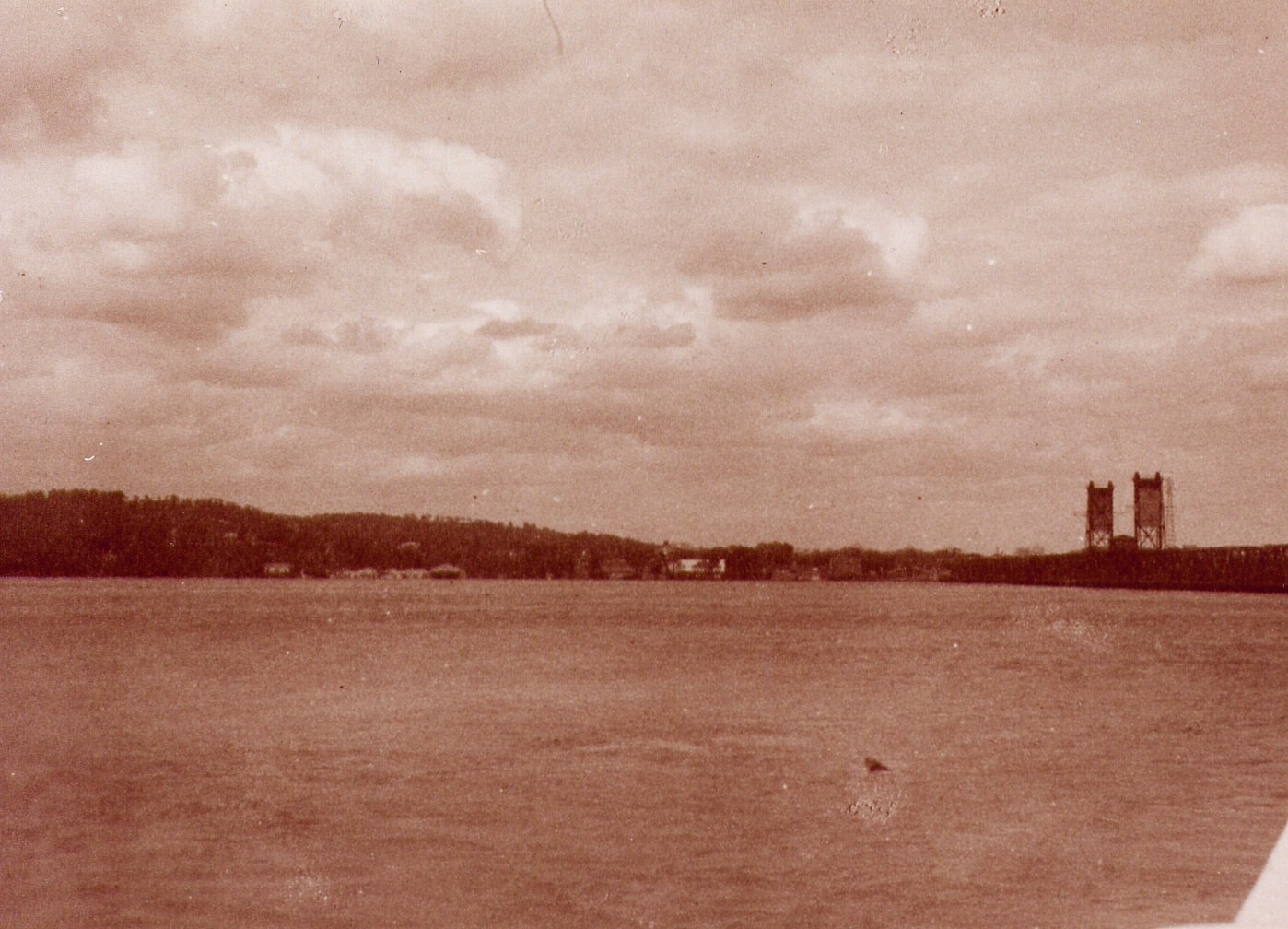 |
Contributed by H. E. Huber |
View of Ft. Smith and Van Buren Free Bridge |
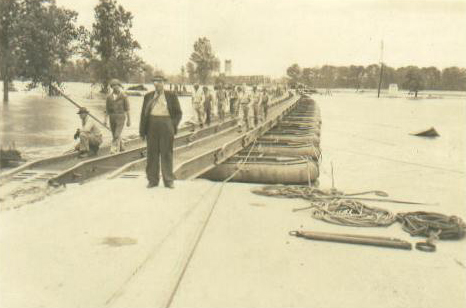 |
Contributed by H. E. Huber |
This pontoon bridge spanned the gap from dry land to the Ft. Smith end of the bridge. |
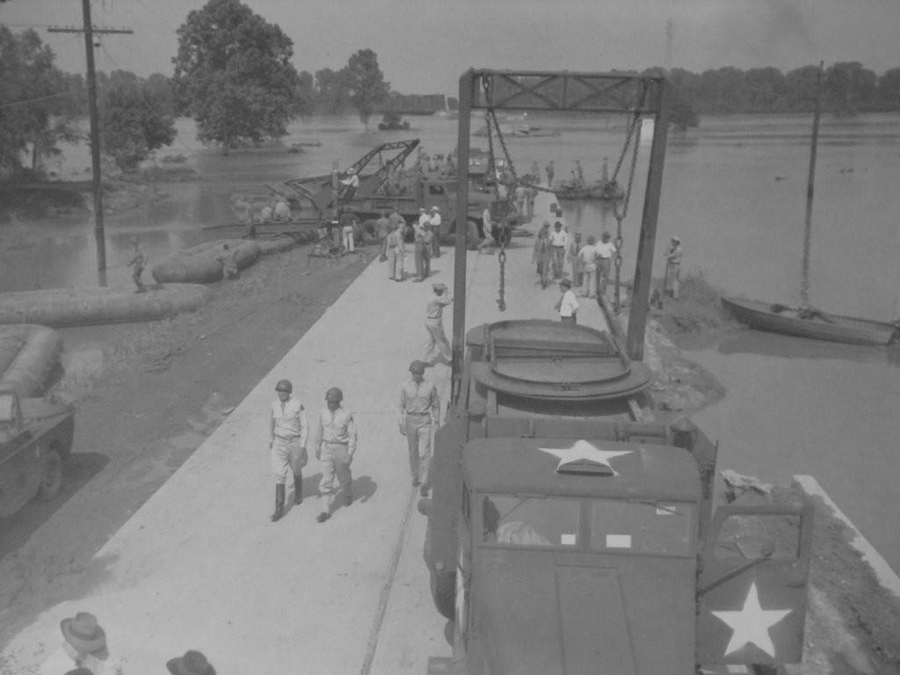 |
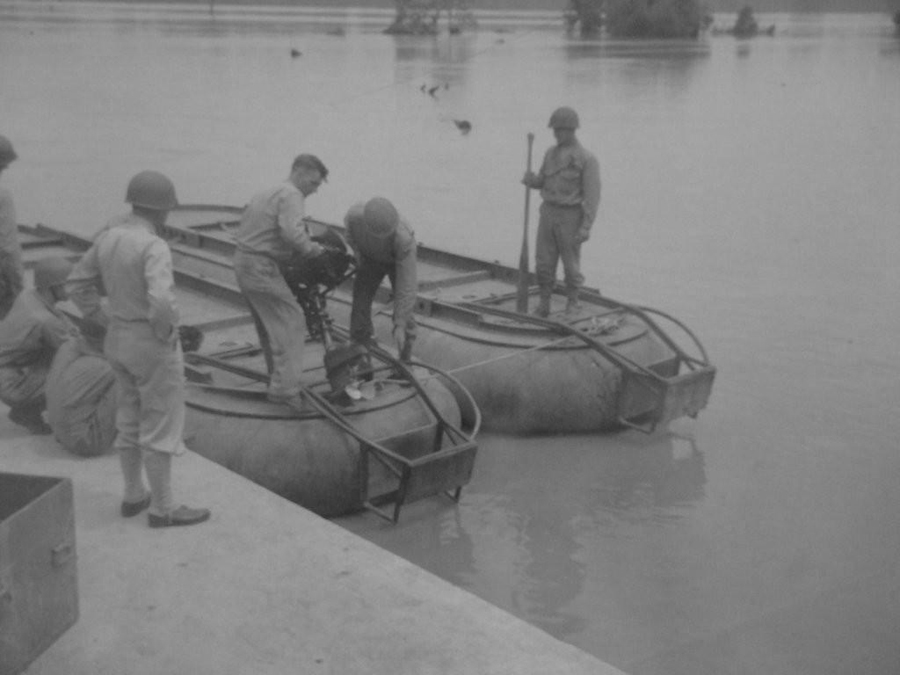 |
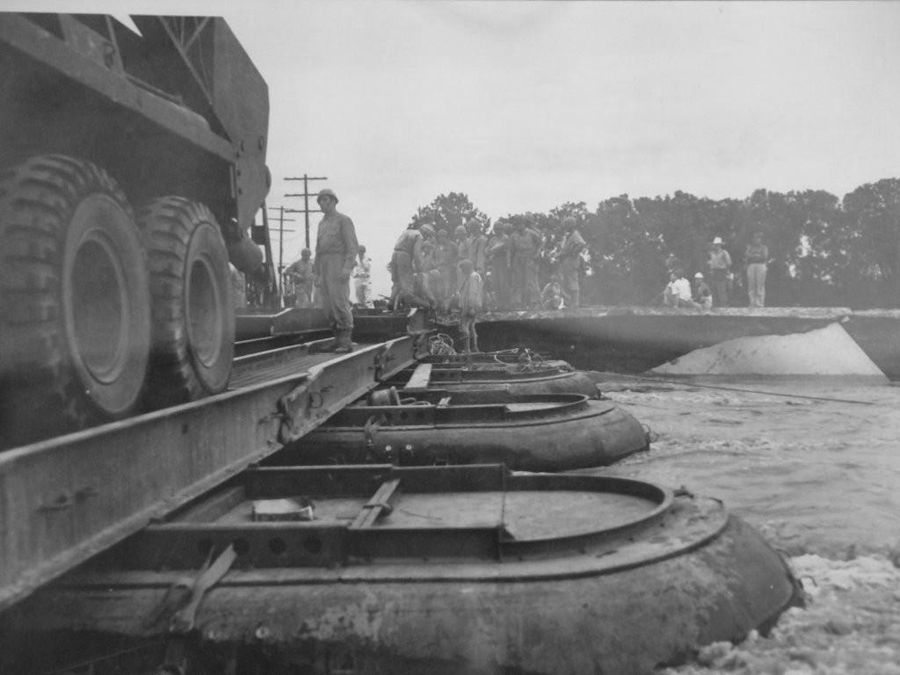 |
 |
Contributed by Chuck Raney |
Pictures of the construction of the pantoon bridge during the spring 1943 flood. |
 |
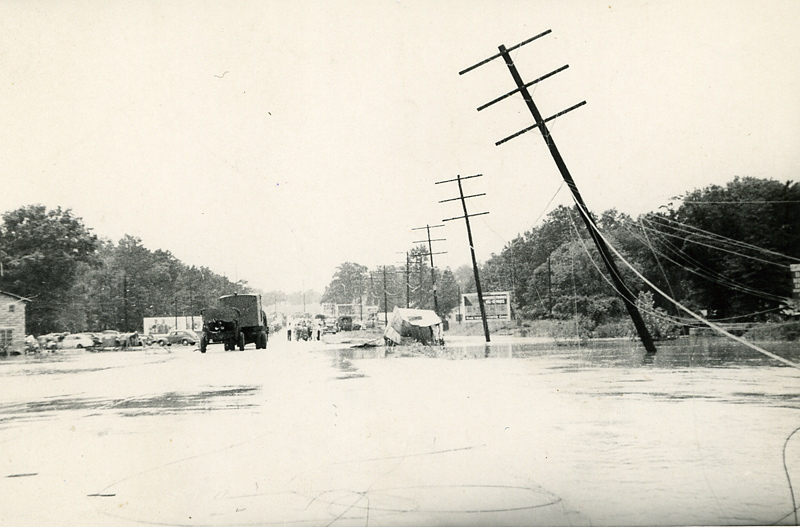 |
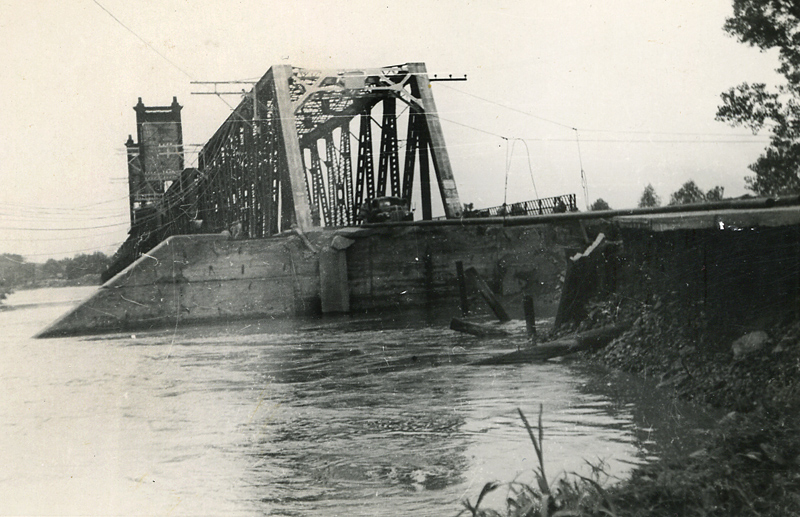 |
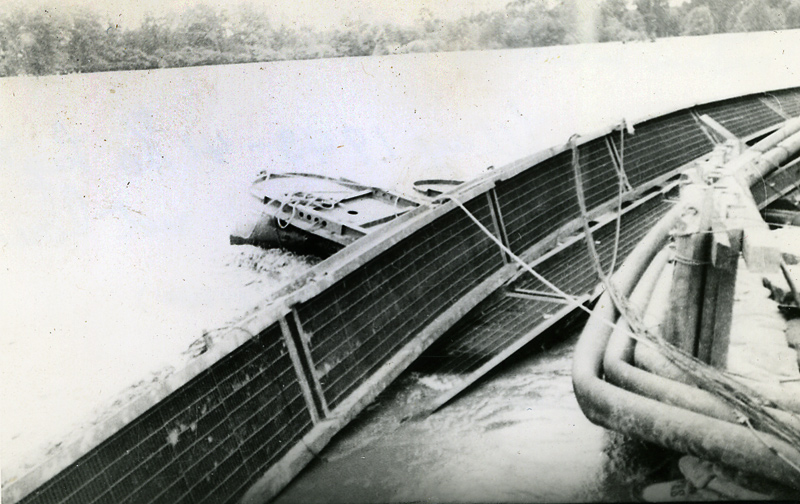 |
Contributed by Bill Pollard |
In the top view, note the two fire hoses down the middle of the pantoon bridge which is carrying all of the drinking water for Ft. Smith and Camp Chaffee. In the second from the bottom view, those hoses are supported by cables attached to the bridge to carry them across the gap in the road way. The bottom view shows the pantoon bridge swept aside with the water supply in trouble. |
| "Following the disasterous flood of May, 1943, a levee system was installed allow the river banks around the Ft. Smith-Van Buren area. This led to a need to raise the bridge to the height of the new levee system. The bridge was raised in small increments (anyone know the size of these increments?). At the time, we lived two blocks down Jefferson Street from the end of the viaduct over the Missouri Pacific. I remember the traffic light at the top of the viaduct that controlled the single lane traffic over the wooden ramps on the Van Buren side of the bridge while it was raised. There were similar traffic lights for the single lane traffic on the Ft. Smith side of the bridge." Mike Condren |
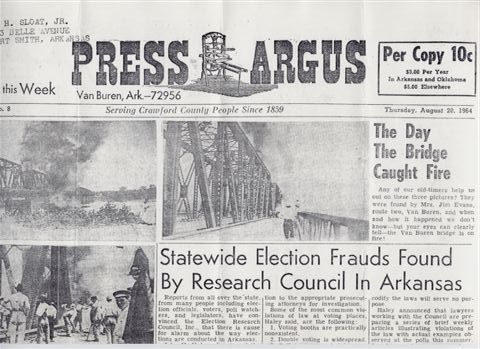 |
Contributed by H.E.Huber |
This site is maintained by the Arkansas Boston Mountains Chapter of the National Railway Historical Society located in Springdale, Arkansas

Home of THE ARKANSAS SCRAMBLER
For questions, email arkyrail at outlook.com